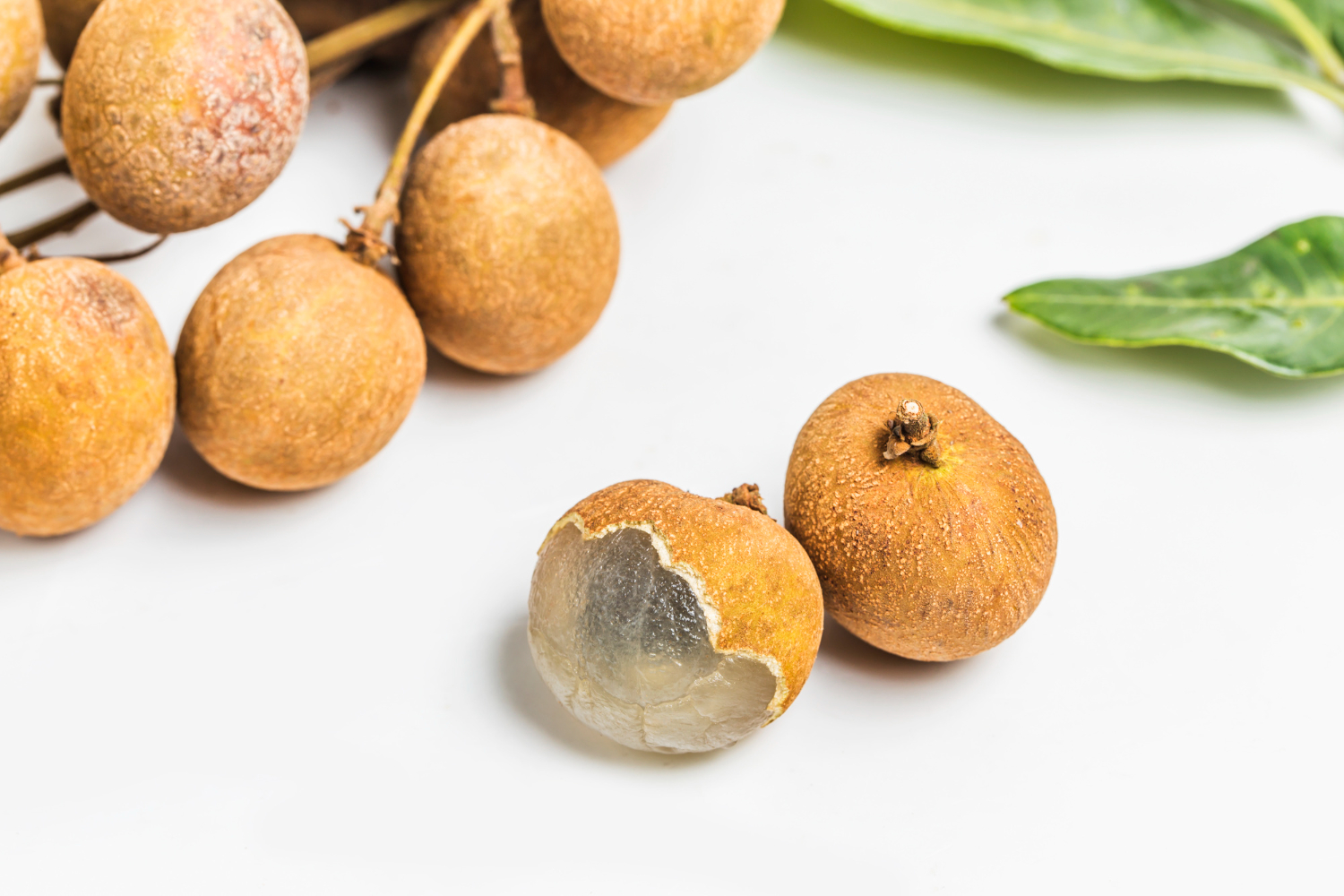Longan (Dimocarpus longan) is a tropical fruit native to Southeast Asia and is also cultivated in other parts of the world, including China, Thailand, and India. It belongs to the soapberry family (Sapindaceae) and is closely related to the lychee fruit.
Longan fruits are small, round, and have a thin, brownish shell or skin. Inside the shell, there is a translucent, juicy flesh that is white or slightly yellowish in color. The flesh surrounds a single dark seed, which is typically not consumed.
The taste of longan is sweet and aromatic, similar to that of lychee. Some describe the flavor as being reminiscent of a muscat grape. Longan fruits are usually eaten fresh and are a popular ingredient in desserts, fruit salads, and drinks. In many Asian countries, they are also dried and used in traditional Chinese medicine.
Longan trees are evergreen and can reach heights of up to 30 feet (9 meters). They thrive in warm, humid climates and require well-drained soil. The trees produce clusters of small, fragrant flowers that eventually develop into the fruit.
In terms of nutritional value, longan fruits are low in calories and fat. They are a good source of vitamin C and contain some other vitamins and minerals, including potassium and iron. Longan is also believed to have certain health benefits, such as promoting relaxation and aiding digestion, although scientific research on these claims is limited.
Overall, longan is a delicious and refreshing tropical fruit enjoyed by many people around the world for its sweet taste and unique flavor.

How to grow longan
Growing longan trees requires a warm and tropical climate, as they are sensitive to cold temperatures. Here are the basic steps to grow longan:
- Climate and Location: Choose a location with a warm and humid climate, ideally with temperatures ranging between 68°F (20°C) and 95°F (35°C). Longan trees require full sun exposure for optimal growth.
- Soil Preparation: Longan trees prefer well-drained soil with a pH level between 6.0 and 6.5. Prepare the planting area by loosening the soil and removing any weeds or debris. If the soil is heavy or clayey, you can improve drainage by adding organic matter, such as compost.
- Plant Selection: Obtain healthy longan seedlings from a reputable nursery or garden center. Select seedlings that are disease-free and have well-developed root systems.
- Planting: Dig a hole that is slightly larger and deeper than the root ball of the longan seedling. Place the seedling in the hole, ensuring that the top of the root ball is level with or slightly above the soil surface. Backfill the hole with soil, gently firming it around the seedling.
LonganCare
- Watering: Water the newly planted tree thoroughly after planting. Afterwards, provide regular watering to keep the soil moist but not waterlogged. During the dry season, longan trees may require more frequent watering.
- Mulching: Apply a layer of organic mulch, such as wood chips or straw, around the base of the tree. Mulch helps retain moisture, suppresses weeds, and regulates soil temperature.
- Pruning: Prune trees to remove dead, damaged, or crossing branches. This helps improve air circulation and sunlight penetration. Pruning can be done during the dormant season.
- Fertilization: trees benefit from regular fertilization to promote healthy growth and fruit production. Apply a balanced fertilizer with a ratio of nitrogen (N), phosphorus (P), and potassium (K), following the manufacturer’s instructions. Split the fertilizer application into several doses throughout the growing season.
- Pest and Disease Control: Monitor the tree for common pests and diseases, such as fruit flies, aphids, and powdery mildew. If necessary, use appropriate organic or chemical controls to manage these issues.
- Harvesting: trees typically start bearing fruit after 3 to 5 years. Harvest the fruit when the skin turns from green to a brownish color. The fruit should be slightly soft to the touch. Be careful not to damage the fruit when harvesting.
Source of information : https://chat.openai.com/
Other fruits : https://thailandseasonfruit.com/
